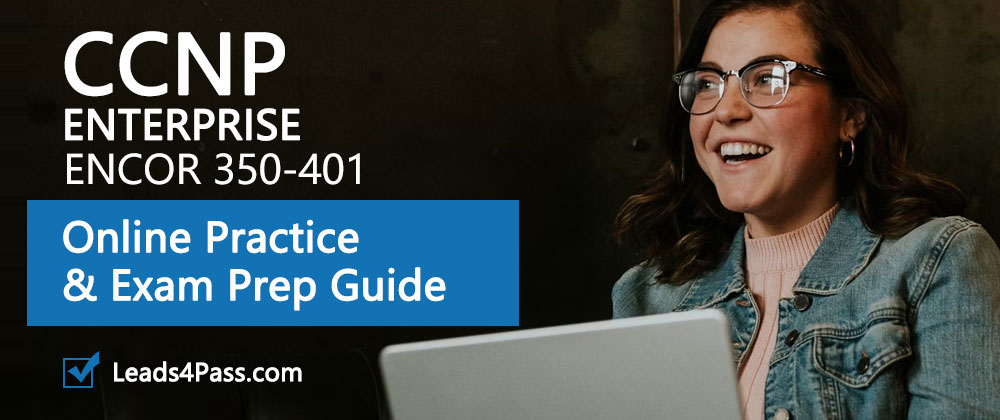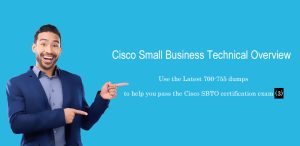350-401 ENCOR Exam: Free Online Practice & Exam Prep Guide
The Cisco CCNP Enterprise Core Exam (350-401 ENCOR) is a cornerstone of the CCNP and CCIE Enterprise certifications, covering critical areas of enterprise network technologies, including dual-stack (IPv4 and IPv6) architecture, virtualization, infrastructure, network assurance, security, and automation.
This article offers an efficient study guide and free access to 15 of the latest exam questions for online practice, helping you familiarize yourself with the current exam format and content. Additionally, we recommend the Leads4Pass 350-401 ENCOR: https://www.leads4pass.com/350-401.html (PDF & VCE), featuring 1407 up-to-date questions and answers, to help you easily pass the exam!
350-401 ENCOR Information You Must Know
The 350-401 ENCOR exam is a key professional-level certification within the Cisco ecosystem, designed to validate candidates’ knowledge and skills in enterprise network core technologies. Passing this exam earns you the Cisco Certified Specialist – Enterprise Core certification. Moreover, the skills covered in the ENCOR exam—such as SDN, automation, and security—are in high demand in today’s enterprise networking landscape, significantly boosting your career competitiveness.
| Exam Code: | 350-401 |
| Exam Name: | Implementing and Operating Cisco Enterprise Network Core Technologies (ENCOR) |
| Exam Duration: | 120 minutes |
| Number of Questions: | 90-110 (including multiple-choice, drag-and-drop, and lab-based questions) |
| Passing Score: | 825/1000 |
| Certifications: | CCNP Enterprise, CCIE Enterprise Infrastructure, CCIE Enterprise Wireless |
350-401 ENCOR Exam Strategies
Preparing for the 350-401 ENCOR exam requires a well-structured study plan and high-quality resources. Here are five practical tips to help you study efficiently in a short time:
- Create a Detailed Study Plan
Refer to the exam blueprint (available on Cisco’s official website) and allocate study time across the six key domains: architecture, virtualization, infrastructure, network assurance, security, and automation. Aim for 5-10 hours of study per week over 8-12 weeks to cover all topics thoroughly. - Leverage Diverse Learning Resources
In addition to official materials like the CCNP and CCIE Enterprise Core ENCOR 350-401 Official Cert Guide, explore online courses (e.g., CBT Nuggets, Udemy) and whitepapers for deeper understanding. Video courses are great for grasping concepts quickly, while books support in-depth learning. - Practice with Exam Questions
Practice questions are the best way to familiarize yourself with the exam format and difficulty. Choose resources with up-to-date questions and detailed answer explanations to ensure you understand each concept. The 15 questions we’ll share later are a great starting point! - Gain Hands-On Lab Experience
The ENCOR exam includes lab-based questions (e.g., configuring BGP, OSPF, or VRF), so proficiency with Cisco equipment or simulators like Cisco Modeling Labs (CML) or GNS3 is essential. The free Cisco CML is an excellent tool for hands-on practice. - Join a Learning Community
Engage with the Cisco Learning Network, Reddit’s r/ccnp subreddit, or local study groups to exchange experiences and troubleshoot challenges with fellow candidates.
Practice the latest 350-401 ENCOR exam questions online
| Number of exam questions (FREE) | The answer is revealed at the end of the article | Compare |
| 15 | Verify answer | Last shared |
Question 1:
Refer to the exhibit. How does the router handle traffic after the CoPP policy is configured on the router?
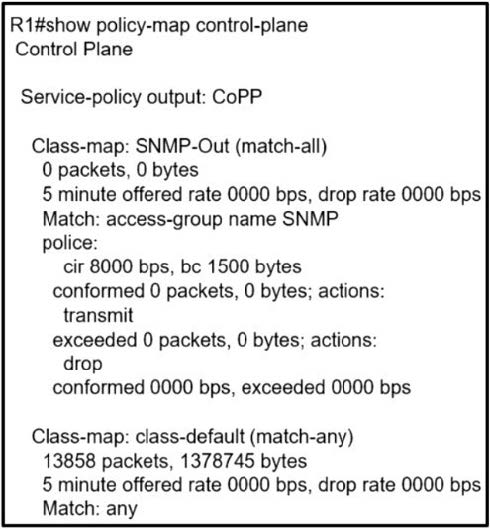
A. Traffic coming to R1 that does not match the access list SNMP is dropped.
B. Traffic coming to R1 that matches the access list SNMP is policed.
C. Traffic passing through R1 that matches the access list SNMP is policed.
D. Traffic generated by R1 that matches the access list SNMP is policed.
Correct Answer:?
Service Policy is in the output direction. So, traffic generated by the router will be policed.
Question 2:
Which method should an engineer use to deal with a long-standing contention issue between any two VMs on the same host?
A. Adjust the resource reservation limits
B. Live migrate the VM to another host
C. Reset the VM
D. Reset the host
Correct Answer:?
Question 3:
Which statement about an RSPAN session configuration is true?
A. A fitter must be configured for RSPAN Regions.
B. Only one session can be configured at a time.
C. A special VLAN type must be used as the RSPAN destination.
D. Only incoming traffic can be monitored.
Correct Answer:?
in all participating switches -> This VLAN can be considered a special VLAN type -> Answer \’ A special VLAN type must be used as the RSPAN destination\’ is correct.
We can configure multiple RSPAN sessions on a switch at a time, then continue configuring multiple RSPAN sessions on the other switch without any problem -> Answer \’ Only one session can be configured at a time\’ is not correct. This is how to configure the Remote SPAN (RSPAN) feature on two switches. Traffic on FastEthernet0/1 of Switch 1 will be sent to Fa0/10 of Switch 2 via VLAN 40.
+
Configure on both switches Switch1,2(config)#vlan 40 Switch1,2(config-vlan)#remote-span
+
Configure on Switch1 Switch1(config)# monitor session 1 source interface FastEthernet 0/1 Switch1(config)# monitor session 1 destination remote vlan 40 + Configure on Switch2 Switch2(config)#monitor session 5 source remote vlan 40 Switch2(config)# monitor session 5 destination interface FastEthernet 0/10
Question 4:
Which QoS feature uses the IP Precedence bits in the ToS field of the IP packet header to partition traffic into different priority levels?
A. marking
B. shaping
C. policing
D. classification
Correct Answer:?
Using packet classification, you can partition network traffic into multiple priority levels or classes of service.
..packet classification features, such as IP precedence, to select
packets (or traffic flows) traversing a router or interface for different types of QoS service. For example, using the three precedence bits in the type of service (ToS) field of the IP packet header…
Question 5:
What is the preferred QoS marking for delay-sensitive real-time protocols such as RTP?
A. CS1
B. ATM-CLP
C. EF
D. AF
Correct Answer:?
Question 6:
Refer to the exhibit. R1 can ping the R3 fa0/1 interface. Why do the extended pings fail?
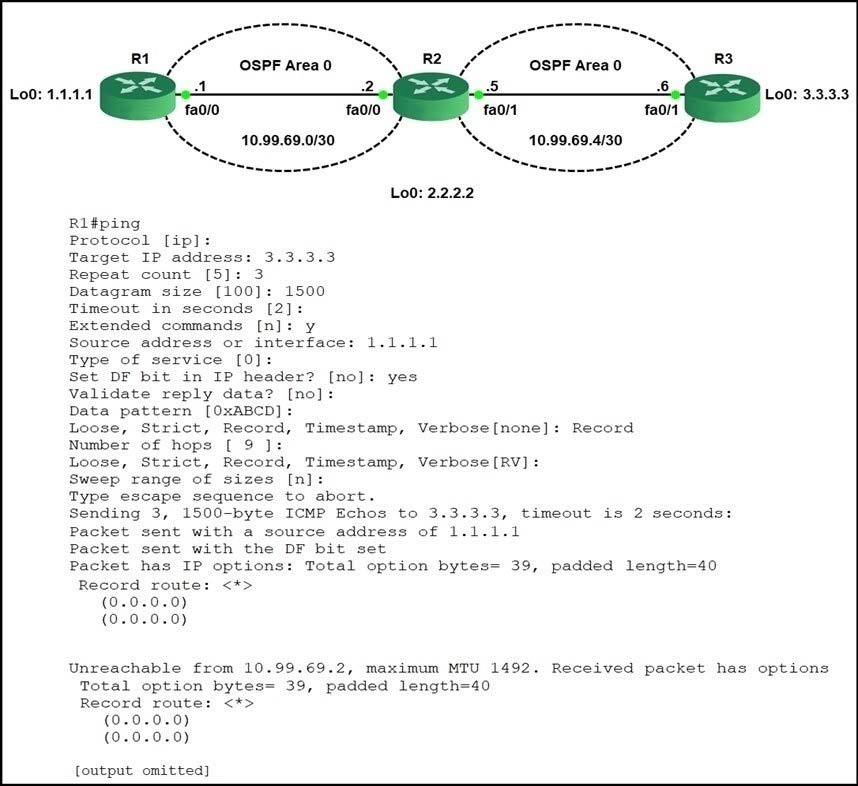
A. The maximum packet size accepted by the command is 1476 bytes.
B. R3 is missing a return route to 10.99.69.0/30
C. R2 and R3 do not have an OSPF adjacency
D. The DF bit has been set
Correct Answer:?
If the DF bit is set, routers cannot fragment packets. From the output below, we learn that the maximum MTU of R2 is 1492 bytes, while we sent a ping with 1500 bytes.
Therefore, these ICMP packets were dropped.
Note: Record option displays the address(es) of the hops (up to nine) the packet goes through.
Question 7:
Which feature must be configured to allow packet capture over Layer 3 infrastructure\’?
A. VSPAN
B. IPSPAN
C. RSPAN
D. ERSPAN
Correct Answer:?
Encapsulated remote SPAN (ERSPAN): Encapsulated Remote SPAN (ERSPAN), as the name says, brings generic routing encapsulation (GRE) for all captured traffic and allows it to be extended across Layer 3 domains.
Reference: https://community.cisco.com/t5/networking-documents/understanding-span-rspan-and-erspan/ta-p/3144951
Question 8:
To increase total throughput and redundancy on the links between the wireless controller and switch, the customer enabled LAG on the wireless controller. Which EtherChannel mode must be configured on the switch to allow the WLC to connect?
A. Auto
B. Active
C. On
D. Passive
Correct Answer:?
Link aggregation (LAG) is a partial implementation of the 802.3ad port aggregation standard. It bundles all of the controller\’s distribution system ports into a single 802.3ad port channel. Restrictions for Link aggregation:
+ LAG requires the EtherChannel to be configured for `mode on\’ on both the controller and the Catalyst switch. … Reference: https://community.cisco.com/t5/wireless-mobility-documents/lag-link-aggregation/ta-p/3128669
Question 9:
DRAG DROP
Drag and drop the characteristics from the left onto the routing protocol types on the right.
Select and Place:
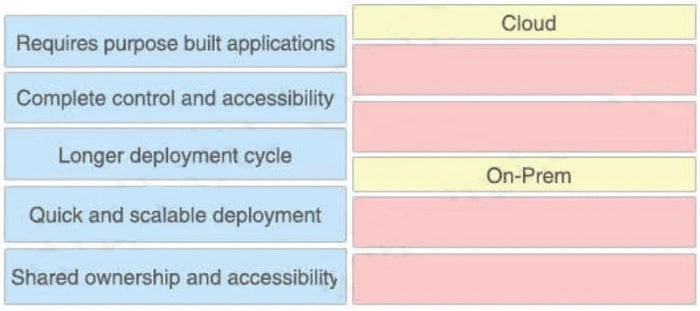
Correct Answer:
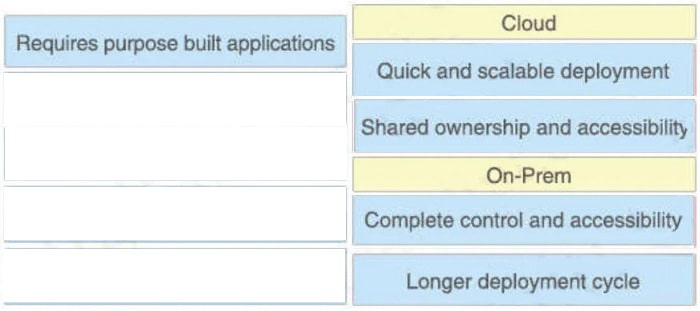
Question 10:
DRAG DROP
Drag and drop the definitions on the left to their respective technological names on the right.
Select and Place:
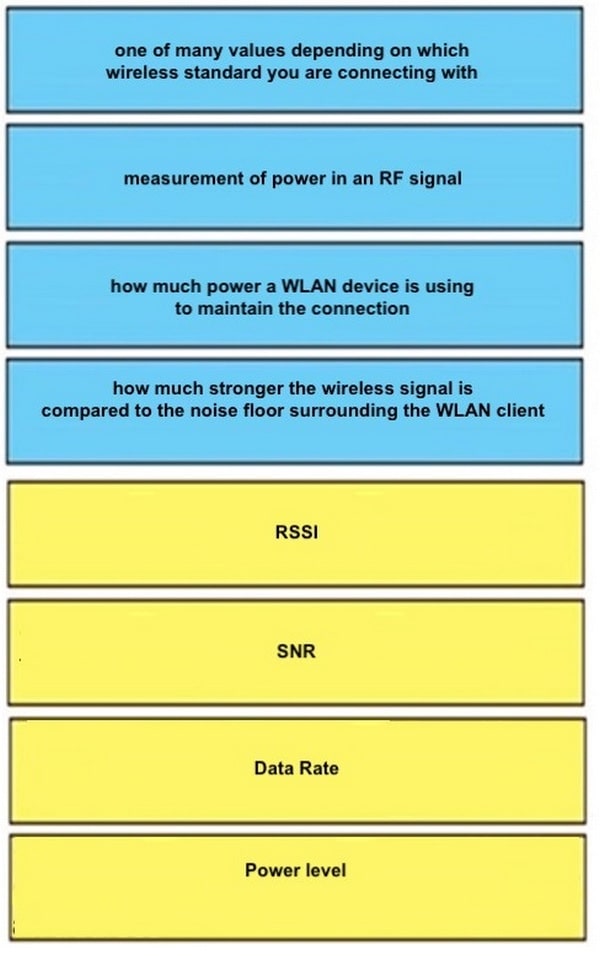
Correct Answer:
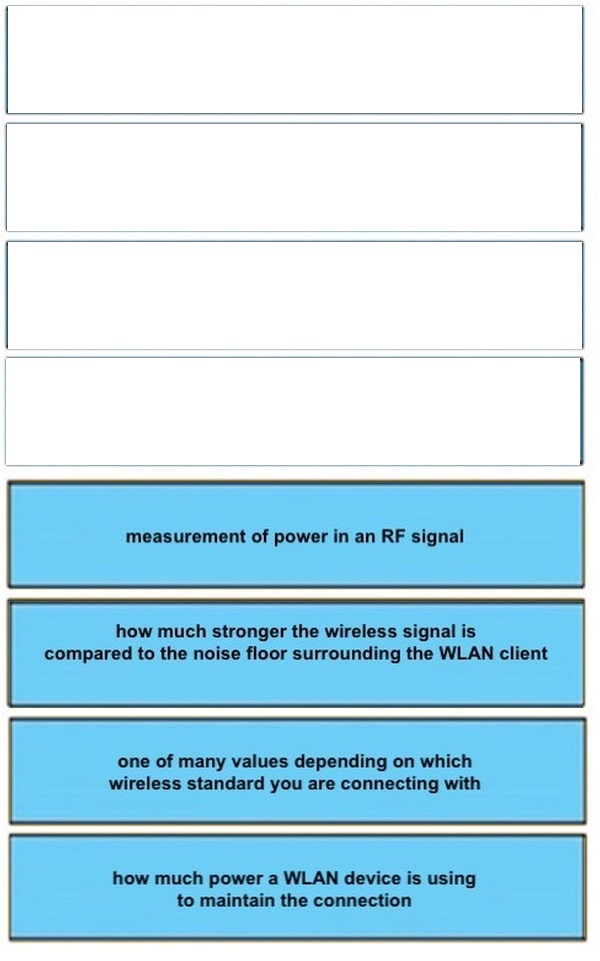
Question 11:
What is the responsibility of a secondary WLC?
A. It shares the traffic load of the LAPs with the primary controller.
B. It avoids congestion on the primary controller by sharing the registration load on the LAPs.
C. It registers the LAPs if the primary controller fails.
D. It enables Layer 2 and Layer 3 roaming between itself and the primary controller.
Correct Answer:?
When the primary controller (WLC-1) goes down, the APs automatically get registered with the secondary controller (WLC-2). The APs register back to the primary controller when the primary controller comes back online.
Question 12:
Which technology reduces the implementation of STP and leverages both unicast and multicast?
A. VSS
B. VXLAN
C. VPC
D. VLAN
Correct Answer:?
Question 13:
Which of the following are valid statements when configuring Nonstop Forwarding (NSF) with Stateful Switchover (SSO) on a Cisco device? (Choose two.)
A. supports multicast routing protocols
B. Supports IPv4 and IPv6
C. Nonstop Forwarding requires SSO to also be configured
D. HSRP is not supported with NSF/SSO
E. Improper implementation of NSF/SSO can result in routing loops
Correct Answer:?
NSF capability is supported for IPv4 routing protocols only. NSF capability is not supported for IPv6 routing protocols.
NSF does not support IP Multicast Routing, as it is not SSO-aware.
You must configure SSO in order to use NSF with any supported protocol.
The Hot Standby Routing Protocol (HSRP) is not supported with NSF SSO. Do not use HSRP with NSF SSO.
Question 14:
Refer to the exhibit.
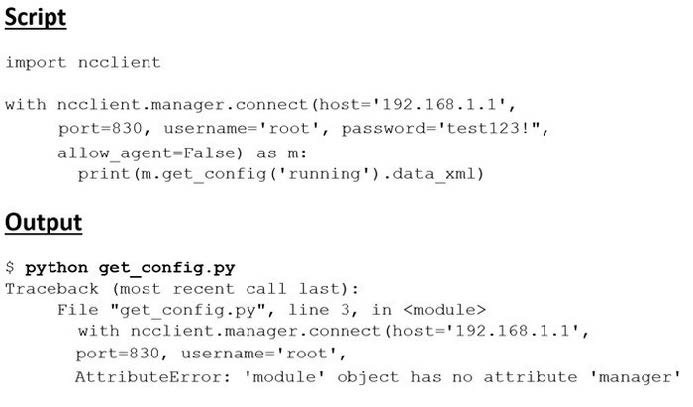
Running the script causes the output in the exhibit. What should be the first line of the script?
A. from ncclient import manager
B. import manager
C. from ncclient import *
D. ncclient manager import
Correct Answer:?
https://ncclient.readthedocs.io/en/latest
Multiple examples are shown using “from ncclient import manager” and then using the manager. connect
Question 15:
What is used to perform OoS packet classification?
A. The Options field in the Layer 3 header
B. The Type field in the Layer 2 frame
C. The Flags field in the Layer 3 header
D. the TOS field in the Layer 3 header
Correct Answer:?
Type of service, when we talk about PACKET, means layer 3
Answers to 350-401 ENCOR exam questions
| Q1 | Q2 | Q3 | Q4 | Q5 | Q6 | Q7 | Q8 | Q9 | Q10 | Q11 | Q12 | Q13 | Q14 | Q15 |
| D | A | C | D | C | D | D | C | IMAGE | IMAGE | C | B | CD | A | D |
How to Maximize Your Preparation with These Questions
- Practice Repeatedly: Review the 15 questions multiple times to fully grasp the logic behind each answer.
- Simulate the Exam Environment: Use VCE tools (like those provided by Leads4Pass) to mimic the real exam, testing your time management and test-taking skills.
- Identify and Address Gaps: Use the question explanations to pinpoint knowledge gaps, then dive deeper into those areas using textbooks or courses.
- Get Hands-On: For lab-based questions, practice configurations using Cisco CML or Packet Tracer.
These questions are just a starting point. To thoroughly master the 350-401 ENCOR exam content, we highly recommend the Leads4Pass 350-401 ENCOR exam prep materials: https://www.leads4pass.com/350-401.html. With 1407 questions covering all exam scenarios, a high hit rate, and regular updates, it equips you to confidently tackle new questions and lab tasks in the exam.
Final
Passing the Cisco 350-401 ENCOR exam not only enhances your technical skills but also opens up new career opportunities. The 15 latest questions and answers shared in this article provide a solid starting point, but for comprehensive preparation, the Leads4Pass 350-401 ENCOR exam preparation materials is an essential resource. With 1407 questions, regular updates, and a high hit rate, it significantly boosts your chances of passing.
Kickstart your journey to CCNP certification!
